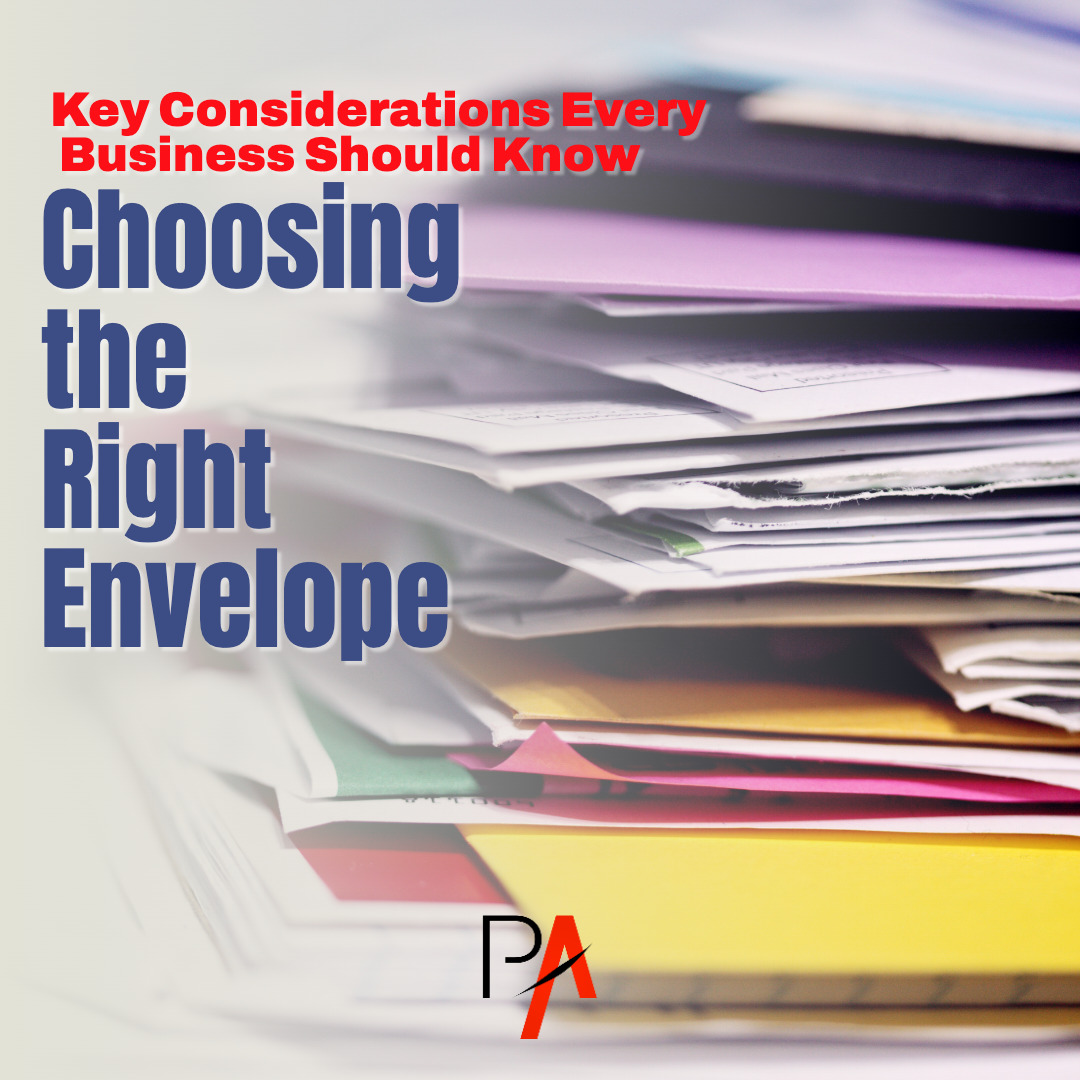Table of Contents
Choosing the Right Envelope
Envelopes are one of the most important aspects of any packaging project. They’re one of the first things people see as they open their mail, and they can make or break your branding efforts. Here are a few tips you need to know about choosing the right envelope for your business:
Best Material when Choosing the Right Envelope
When it comes to envelopes, there are several materials that can be used for making them, depending on the intended use and desired appearance of the envelope. Here are some common materials used for envelopes:
Paper: This is the most common material used for envelopes. It is relatively inexpensive and comes in a variety of colors, weights, and textures.
Cardstock and Fiberboard: This material is thicker and more durable. It is often used for mailing items needing to remain secure and unbent.
Tyvek: This is a synthetic material that is tear-resistant and waterproof. Similarly, Polyethylene: Is a plastic material that is lightweight and waterproof. These are often used for shipping envelopes.
Bubble wrap: This material is often used for padded envelopes, as it provides extra protection for delicate items. The bubble is typically an inner lining of a plastic or paper shipping envelope.
Fabric: This material is less common but can be used for handmade or decorative envelopes.
In addition to these materials, eco-friendly options are available, such as recycled paper and biodegradable materials.
Best Paperweight when Choosing the Right Envelope
Paperweight is a term that refers to the thickness of the paper used to convert an envelope. The thicker the paper, the more postage you will likely have to pay for it, as it tends to make your mailing heavier. However, there are still ways you can ensure your business uses envelopes with just enough weight without exceeding your budget or sacrificing quality.
- If you’re looking for something affordable, look for paperweights around 24lb (about 90gsm). This is a good starting point if you don’t want to spend too much money buying expensive envelopes.
- If quality and thickness, with elegance, is part of your project design, then consider 32/80lb text (about 120gsm). You can find a lovely array of envelopes that have been converted from this weight of paper, including metallic, cotton, linen, and extra smooth.
- If you’re mailing heavy items needing protection, such as photos or art, fiberboard or cardboard envelopes are probably better suited.
Envelope Size
Envelope size is one of the most important factors to consider. It will determine whether or not your mail piece can be effectively delivered, so it’s important to get this right. One tip to remember is to choose your envelope before creating your insert. It is easier to trim down or make your insert larger since finding odd-size, non-standard envelopes at a reasonable price is virtually impossible.
There are several different sizes available, each with its own purpose. Below is an envelope style list, as each style will have an array of ‘standard’ sizes associated with them. Here are some of the most common:
- Business or Commercial Envelopes – some might refer to these as ‘regular envelopes’ as #10 is one of the most common envelopes used for business, mass mailing, etc. – View the size chart for common business size envelopes.
- Baronial & Announcement Envelopes – Baronial is manufactured with a diagonal seam and a pointed flap, while A-size (Announcement Size) envelopes are manufactured with side seams and square flaps. Both are used for social and business invitations and are converted from all ranges of papers.
- Catalog and Booklet Envelopes – Catalog envelopes are typically manufactured with a center seam, and the opening is on the short end (OECS – open end, center seam), while Booklets are manufactured with a side seam and opening along the long side (OSSS – open side, side seam)
Sealing Method
When it comes to sealing an envelope, there are a few different options. The most common method is “moisten to seal,” better identified as “gummed.” Gummed envelopes are envelopes with a strip located on the envelope’s flap. This adhesive is activated by moisture, usually by licking or wetting the gummed strip with a sponge and then pressing down to seal the envelope.
Other common sealing options are ‘self-sealing’ such as peel-to-seal, latex, and clasp. Not to forget the wafer, label, and wax sealer, which are more common amongst designers specializing in hand-made invitations.
Choosing the Right Envelope is an important aspect of any packaging project.
Envelopes are one of the most important aspects of any packaging project. They’re the first thing a customer sees, they’re the last thing a customer touches, and they can be used to convey your brand identity in more ways than one.
While all envelopes are not created equal, some elementary features make up an excellent envelope: A clean and crisp design that is easy to read, a color that matches or complements your project, and the best weight and finish your envelope to adequately hold the insert.
Conclusion
Envelopes are one of the most important aspects of any packaging project. They’re used to send letters and packages and help ensure that your products arrive safely at their destination. Before you rush out and buy some envelopes without thinking about what kind will work best for your needs, take some time to consider which factors are most important when choosing your next envelope.

